While on the subject of Bohuslav Martinu, here’s his music for half-time at a football match.
Come on, the reds!

While on the subject of Bohuslav Martinu, here’s his music for half-time at a football match.
Come on, the reds!

Welcome to the 97th work in the Slipped Disc/Idagio Beethoven Edition
The conductor Sir Georg Solti once told me, ‘I am conducting Beethoven for a Hollywood movie. It will bring many young people to concerts.’
Some hopes.
The film was Immortal Beloved (1994), starring Gary Oldman as the great composer and the Dutch actor Jeroen Krabbé as his faithful amanuensis Anton Schindler, setting out on a posthumous mission to track down the one woman Beethoven really loved. Schindler decides in the end that Beethoven was consumed by love for his brother’s wife, the loose-living Johanna, a conclusion unsupported by any historical evidence and actively contradicted by Beethoven’s remorseless court fight with Johanna over the custody of her son Karl. The film never achieved international release.
Other musicians who can be heard on the soundtrack include Gidon Kremer, Murray Perahia and the London Symphony Orchestra.
In 2006, Metro-Goldwyn-Mayer released Copying Beethoven by the Polish director Agnieszka Holland, shot mostly in Hungary. It finds the great man composing his ninth symphony with help from a young female copyist. Beethoven’s two copyists at the time were decidedly male. Ed Harris played the composer. The film proved ephemeral. The Kecskeméti Orchestra and the LSO are credited for soundtrack.
Although Hollywood has made numerous biopics about artists and writers, composers get shortchanged and Beethoven is elusive on screen. His greatest impact has been as a St Bernard dog in a children’s film franchise that has so far yielded eight movies, none of which utilise Beethoven’s music.
His works are most often heard in films about classical musicians, such as Hilary and Jackie (1998) where the Archduke Trio was performed and Mr. Hollands Opus (1995) where the 7th symphony was used to good effect (the full soundtrack was compiled by Michael Kamen; the orchestra was the Seattle Symphony).
Music relevance is immaterial. Für Elise made an appearance in Polanski’s 1968 horror film Rosemary’s Baby, the ninth symphony showed up in Die Hard (1998) and the string quartet Opus 18, No. 5 underscored Daddy Day Care (2003). There is an undercurrent of the Eroica Symphony in Mission Impossible (2015). What’s it doing there? It’s music, and it’s out of copyright.
That said, there are a few movies where Beethoven’s music is absolutely fit for purpose – the Emperor concerto in The King’s Speech (2010) where it is used to cure the King’s stutter; the first cello sonata in The Horse Whisperer (1998); and the first piano sonata in the haunting Warsaw film, The Zookeeper’s Wife (2017).
Among all his film credits, Beethoven looms largest in Stanley Kubrick’s 1971 adaptation of Anthony Burgess’s novel, A Clockwork Orange. The central character, Alex, psyches himself up to commit rape and murder by listening to Beethoven’s ninth symphony, the humane antithesis to his violent actions. The recording used in the film is Ferenc Fricsay’s 1957 Berlin performance for Deutsche Grammophon.
Although Kubrick was knowledgeable about music and discriminating in his tastes, nothing about this film makes musical sense. Alex and his gang are thugs who threaten social order by feasting on the greatest masterpiece of western civilisation. Once arrested, Alex is subjected to behavioural conditioning, a form of mental torture not far removed from the psychiatric ‘treatment’ meted to dissidents in the Soviet Union. In the end, the gangmaster loses his violent urges and is rehabilitated by the music that first corrupted him.
Kubrick also used two Rossini overtures, William Tell and The Thieving Magpie, and selections from Elgar, Purcell and Rimsky-Korsakov’s Scheherazade that were electronically warped on a Moog synthesiser by Wendy Carlos. Burgess proclaimed the film ‘brilliant’, an accolade he later retracted. Carlos released a separate album of his adaptations. Seen half a century later, the film’s mindless violence has lost some of its shock value but none of its unsettling threat. It’s an ugly film, unforgettable for all the wrong reasons.
What does it have to do with Beethoven? More than first meets the ear. Anthony Burgess, an indefatigable English writer whose real name was John Wilson, was himself a composer who completed three symhonies and structured some of his novels in sonata form. One of these was a recreation of Napoleon’s life, modelled on Beethoven’s Eroica and titled Napoleon Symphony: A Novel in Four Movements. Kubrick toyed for a while with making it into a movie.
The two creators got on well. They were conjoined by admiration for Beethoven’s inner rage, his hatred of oppression, his essentially revolutionary character. Although Alex does not articulate the attraction, one can appreciate how a young man alienated by the British class system might possibly turn to Beethoven as a hero – and how Beethoven suits his reckless nihilism.
In the novel, Alex describes Beethoven’s music pretty well: ‘‘Oh it was gorgeousness and gorgeosity made flesh. The trombones crunched redgold under my bed, and behind my Gulliver the trumpets three-wise silverflamed, and there by the door the timps rolling through my guts and out again crunched like candy thunder. Oh, it was wonder of wonders. And then, a bird of like rarest spun heavenmetal, or like silvery wine flowing in a spaceship, gravity all nonsense now, came the violin solo above all the other strings, and those strings were like a cage of silk round my bed. The flute and oboe bored, like worms of like platinum, into the thick toffee gold and silver. I was in such bliss, my brothers.’
Alex grasps Beethoven as an alternative to oppressive mass culture, the ‘twanging nonsense’ of pop music, foisted on young people ‘by middle-aged entrepreneurs and exploiters who should know better’. Alex understands that musical trash is inflicted by the haves to keep the have-nots under control. Beethoven is Alex’s freedom cry. A Clockwork Orange is not as amoral as it seems. In a world where mass culture thrives on state-sponsored musical ignorance, Beethoven has the power to raise deprived people above their miserable situation. Seen in this light, Beethoven is an eternal liberator.
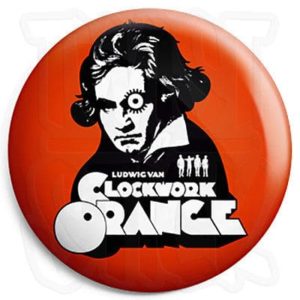
The Royal Opera House has made its complete roll of casual staff redundant, it was confirmed today.
Redundancy talks have begun with selected permanent staff.
More here.

The veteran conductor has shared with Slipped Disc a chapter on a burning topic from his forthcoming book:
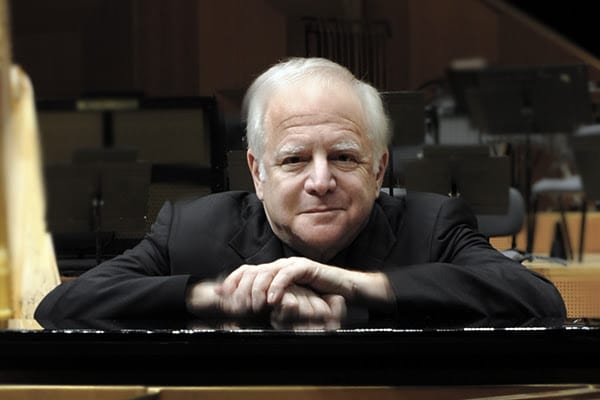
In the New York Times on July 16, 2020, Anthony Tommasini wrote a thoughtful and insightful piece on diversity in the orchestral workplace. He focused on the “blind audition” as being out of touch with the needs of today. Much of what he has written mirrors my own thoughts as expressed in a chapter of my soon-to-be-published new book.
In the interest of bringing attention to this subject, I have decided to let all of you read the chapter “On Diversity” in conjunction with the New York Times article. This discussion is vital in our quest to encompass equality within the orchestral community. When the book is published, there will be additional material based on the questions and comments that have been submitted.
“I can’t understand why people are frightened of new ideas. I’m frightened of the old ones.”
—John Cage
Perhaps the finest three years of my life were spent attending Los Angeles High School. It was seven blocks away from my house, so I could walk there, or when I was sixteen, take my Corvair. Searching for a parking place might put me three streets away from the building, but hey, I had my license and, by God, I was going to drive whenever I could.
The school was in a district that encompassed areas with students representing various racial, socioeconomic, and religious backgrounds. We were a lesson in how young people could get along. The time I am speaking about is the period from 1959 to 1962, pretty much before the world would change in terms of, well, everything. During my entire time at the home of the Romans, very little attention was drawn to the differences between cultures.
We studied, played, and learned together. Our social and cultural disparities made little difference to us; we could both celebrate and make fun of those qualities that made us individuals. Sometimes during lunch breaks, some of us would jam into one of the smallish practice rooms and engage in something called a “chop” session, in which no topic was off limits. We could insult each other, trying to outdo the person who said something that today could get you suspended or even expelled from school.
That is just how it was. My, how times and propriety have changed.
If there is one topic that is on the lips of pretty much everyone in the orchestral world, it is the subject of diversity. What was once the exclusive province of white males has been altered dramatically in a surprisingly short period of time. For some, these changes cannot come fast enough, and with that, we have found ourselves in some almost unnavigable waters.
My high school music groups were filled with the same variety of individuals as the whole school. About a mile away, there was Fairfax High, located within a mostly Jewish neighborhood. And to the east, there was Fremont, a predominantly black school. This was only partitioned because of the way the school districts were set up, and if you went to public school, you went to the one closest to where you lived. I was fortunate to have attended the most diverse school of the three.
Travel about five miles to downtown LA, and if you went to Philharmonic Hall, you only saw white musicians on the stage. But go to the sound stages, jazz clubs, and recording studios, and you could find a balance of musicians that looked surprisingly like good old LA High. I would soon learn that the real world was not like this at all. But I was not prepared for the degree of segregation, mostly but not all unintentional, that existed in the orchestral world.
My first taste of this came when I was asked to join the union when I arrived in St. Louis as the assistant conductor. Since I already belonged to Local 47 of the American Federation of Musicians in Los Angeles, it was not necessary for me to be part of the Local in my new home. When the first inquiry was made, I was told that the number that was applied to the union affiliate was 2-197. I did not understand why there was a hyphenated set of digits and received this explanation:
“Because Local 2, the second oldest union in the country, was for white musicians, and Local 197 was the separate union for black musicians.”
Gulp!
I discovered that this was not uncommon in the States, and that it was not until 1953 that segregated locals began to merge, starting with the amalgamation of Locals 47 and 767 in Los Angeles. To this day, I still do not understand why both numbers are still included in some cities. Why not just one, equal union for all?
When I was appointed assistant conductor in 1968, there were just two members of the St. Louis Symphony who were black. That number has not changed by much over the years, and the same is true for most major orchestras. As difficult as it was for women to be hired, the plight of blacks, among other racial minorities, has been even greater. Most of you may not remember the time when only men played in the orchestra, with the occasional exception of a harpist. But at least that barrier came crashing down rather quickly with the dawning of the screened audition.
I have written about this in a previous volume and will not get into the details other than to amplify some of my thoughts. The idea behind the use of the screen was that if no one could see the person auditioning for a position in the orchestra, then there could be no accusation of discrimination. This made perfect sense during the civil rights movement and continued into the equal-rights era. But today, questions are coming up, many that seemingly have no satisfactory answers.
Check out how your orchestra looks onstage at the present time. In many of our top-tier groups, you will see an almost equal number of women performing with their male colleagues. This certainly was not the case even ten years ago. There is no question that the screen has made a difference in this area, considering that the United States has not exactly been the paragon of equality between men and women. After all, there are still twelve states that have not ratified the ERA.
But times have changed. It is my belief that now, very few women would be discriminated against on the basis of their gender in the orchestral world. In a way, the screen now represents a bit of an insult to those who are making the decision as to who will join the orchestra. Do we really believe that today’s musicians cannot come to a fair conclusion because they have seen who is playing?
Perhaps more to the point is that the screen takes away certain parts of the musical experience that musicians will encounter in the actual job. We do not rehearse or perform behind a barrier. Why should we have it there for auditions? Yes, anonymity would be compromised, but usually, one or more members of the orchestra know someone who is coming to audition anyway. I certainly have had moments when I have tried to guess who might be playing, even though there is no paperwork confirming the identity of the person behind the wall.
Here is an example of how much inequity the screen can cause. When there is a wind or percussion vacancy, or even a titled or frozen chair, the people on the audition committee typically include those who are in the section in question. So if you have a vacancy for first flute, and the second flute of the orchestra tries out for the position, the committee automatically knows that this colleague is auditioning. How? Because that person is supposed to be in the hall listening and is not there, so logically the panel assumes that this musician is one of the candidates playing. Add to that the members of the orchestra who are usually advanced straight to the finals, and chances are that most jury personnel can figure out when that particular musician is playing. As trained professionals who have rehearsed and performed together over a number of seasons, they know how their musical colleagues sound.
The same prejudicial matters can arise when a candidate is a student of one of the members of the orchestra. Certainly the teacher will have coached the younger musician through the rigors of the audition and how to best prepare and perform. And what of those players who have served as extras and substitute musicians throughout the years? Everyone knows how they play and act as citizens in the orchestral workforce. Then you have those string players who may have tried four or five times and have failed to make the cut. Magically, one of them finally gets in, but it is all in relation to the others who played on that given day. It is not in the context of their previous efforts. A baseball player who hits .200 is not going to make the team. Add to all that the question of what other industry hires anyone without knowing about their background, and the dilemma becomes even clearer. There is no true fair doctrine, at least in practical terms.
In addition, the anonymity of the candidates leaves us without critical information we should have access to during the audition process. We do not need to know their names or ages, but having a CV listing their work experience would give us important information about how they would contribute to the orchestra. Those who may not have taken an audition in a long time might not be as technically capable as when they began their careers, but their service may prove their potential value to the organization and needs to be taken into account.
For the past several years, the League of American Orchestras has been focusing on how to bring more African Americans into the world of symphonic music. And many orchestras have programs that give the equivalent of scholarships to people of color. In Detroit, one or two musicians can play in the orchestra for two years, but when the fellowship program ends, they get thrown right back into the pack of the jobless.
We can all agree that any musician hired for an orchestra job must meet the requirements of solid musicianship, first and foremost. This can only start with an early introduction and continued study of music, beginning at home and in the schools. Orchestras should do everything in their power to encourage programs that bring this learning to the fore in their communities. With less and less governmental support going to arts education, it is up to the professionals to step in and work hand-in-hand with schools to develop programs that expose children to the sounds of an orchestra and provide musical instruction.
But suppose budding orchestra musicians of color are discouraged because they still feel the stigma of discrimination. Often, when I speak to students of color, they tell me that they have been warned off by some about the prospect of entering the musical workforce with the odds stacked against them. There are no reparations in the music world. We can, however, alter the audition process, just a little, to help ensure the highest quality outcome while encouraging everyone of ability.
Here follows the Slatkin Audition Process (SAP):
All applicants submit their CVs for consideration as has been the usual method.
A round of preliminary judging takes place, either in the form of in-person auditions behind a screen, or through recordings that are listened to by the audition committee. Again, this is the normal route today.
After that, a round of in-person semi-finals takes place, without the presence of the music director. The difference is that the screen is taken down, no matter the number of contestants. Among other factors not discussed above is the right of a candidate to see the space into which he or she will play. I actually find that this is one of the most compelling arguments against the screen. As a listener, I want the performer to feel at ease and know what the hall looks like and how it sounds without a barrier between that person and the jury.
Let’s say that the audition committee boils it down to three or four musicians. Are you ready for the really big change? Here it is: There are no finals in the traditional sense! Instead, each of the persons who passed through the semis is invited to play with the orchestra for four weeks. It does not matter what the position is—we will know in that time whether someone is good enough to become a member of the ensemble. String players can rotate among different chairs so that all the other members of the section have an opportunity to express an opinion based on their proximity to the candidate.
After all the candidates have completed the trial period, the audition committee meets with the music director to present observations and opinions on their qualifications. The final decision is reached between the leader of the section in question and the music director, as it used to be a long time ago. There is no vote, as any judgement in music is subjective and each person brings his or her own personal feelings into the mix.
What many people do not know is that once a musician gets into the orchestra, there is a probationary period, which can last up to a year and a half. During that time, if the player is employed by another orchestra, that person can take a leave of absence, thereby retaining a position in the former ensemble while awaiting a tenure offer. This is unfair to the originating orchestra, as no auditions can be held until a verdict is rendered by the potential new group.
Therefore, I am going to suggest that the tenure period be shortened to four months. After each four-week period, a group of musicians meets with the probationary player to give input and feedback. After that time, a decision is made. We do not need a year and a half for this, as it only delays the situation for the future, should a person decide not to accept the position after that time. We must think about what is good for the orchestra and not just the player who might be coming from another group.
How does this process help in terms of diversity? It seems to me that a decision can be made in favor of a candidate who represents an underserved community if the jury members feel that the player’s musicianship is on par with the others being considered. I am not a fan of affirmative action, but in this case, a tie is broken by the person who brings the potential to inspire other minorities to the stage. The candidate of color contributes added value by bringing the orchestra a step closer to reflecting the diverse community it serves, which will ultimately lead to a stronger and more sustainable organization.
This is not a perfect solution, by any means, but it is a start in encouraging more persons of color not to give up because of the process. In my heart, I truly believe that the days of overt discrimination in the music world are over. There may be personal reasons that one member of a jury does not care for an applicant, but this is almost always counterbalanced by other fair-minded musicians on the committee.
Recently, a group of six black opera stars held a virtual roundtable, much of it focused on the racial tensions and divisions in the United States. Most of them said that they wanted to see persons of color at the head of artistic institutions, thereby setting themselves as role models more connected to the community. What was most striking to me was that all of them agreed that the corporate world had many leaders who were black and wealthy.
That got me to wondering if orchestras might take advantage of this. Currently, everyone has to go through the audition process, and as you have read, I believe there is a different form of discrimination that occurs through this method. But what if a new position were created in the orchestra; not a temporary fellowship, but a permanent appointment reserved for a person of color?
More than likely, the program would start by funding a string player because those are the sections in which we need more equitable distribution of musicians. The audition process would be as outlined above, with the pool of applicants comprising musicians from underrepresented communities. The position would be an ongoing initiative funded by leaders within the black communities and others.
The musicians entering the orchestra through this program would be subject to all the rules and regulations of the total membership. They would go through the same tenure procedure, and once confirmed as full-time members of the orchestra, the jobs would be theirs to keep. When these musicians leave or retire, they would be replaced by another under the same principles that governed the initial entrant. Their annual salary would be paid for by the endowment created for this purpose. In other words, as with some other musicians, their positions would be fully funded.
There is a reason I have not discussed female conductors or composers so far. That is because they are already making significant progress in the field. Orchestras and opera companies are going out of their way to be more inclusive, sometimes to the point of overdoing it. There may come a day when the gentlemen start to complain about discrimination against their gender. Tough. It has been a long, hard road for the ladies. For the next few years, we will see and hear their voices. Time will judge how their artistry will be accepted.
Several female composers see their pieces played on a regular basis today. And they come from all over the world. Their works are performed by the major orchestras and opera companies, still not in the numbers of their male counterparts. Female conductors have yet to make it into the upper echelon by becoming music directors of the top-tier orchestras. That will come soon enough. At least one opera company, San Francisco, has chosen a woman to lead the theater. Hopefully, she and eventually her compatriots will not be seen as women but rather as just conductors. I cannot wait for that day.
On Slipped Disc we have given up publishing each inevitable change of plan that arises from the Covid-19 pandemic.
It has been appearent for several weeks that most orchestras will keep the shutters down for the rest of 2020, and these announcements follow one another with grim and depressing predictability.
In London, both major arts centres will stay shut, keeping the orchestras idle.
In the US, one city after the next has bowed to the inevitable. Today, Chicago wrote off the rest of the year.
Because of the COVID-19 public health crisis, it has become apparent that we will not be able to present fall 2020 programs as originally planned. Our highest priority is the health and safety of our audiences, musicians, visiting artists and staff. After careful deliberation, we have made the difficult decision to not resume our traditional concert programming before January of 2021 in accordance with the State of Illinois and City of Chicago recovery plans and in response to the current safety guidelines from public health officials. We are hopeful that we will be able to proceed as originally planned with programs at that time.

And a few hours later: Los Angeles Philharmonic Music & Artistic Director Gustavo Dudamel and David C. Bohnett Chair Chief Executive Officer Chad Smith today (announced a far-reaching set of media partnerships and digital initiatives designed to bring the music and programming of the LA Phil to the broadest possible audience. Wide-ranging programs on multiple platforms will make the LA Phil’s work accessible while Walt Disney Concert Hall, the Hollywood Bowl and The Ford are dark due to COVID-19. That period has been extended, as the LA Phil has) canceled its fall 2020 season at Walt Disney Concert Hall through December 31, 2020 in response to the guidance of public health officials.
English National Opera has shared Mimi in its drive-in Bohème between Natalya Romaniw and Sinéad Campbell-Wallace, it announced today.
Rodolfo will be split between David Butt-Philip and David Junghoon Kim.
The 90-minute in-car performances will be staged at Alexandra Palace from 19 to 27 September.
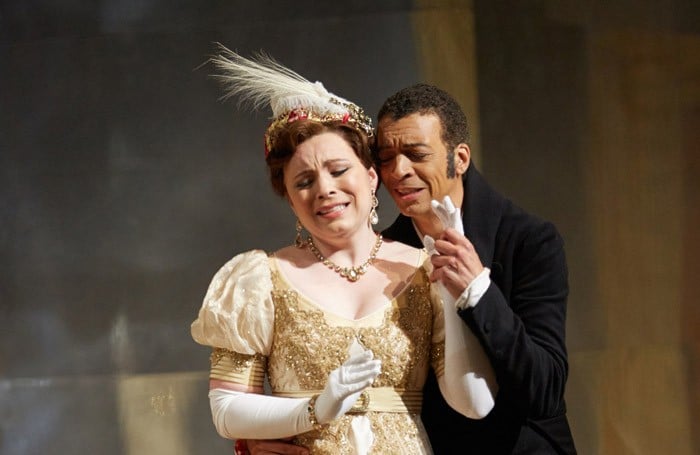
Tickets are £100 for a car (maximum 4 per vehicle).
The Royal Opera House has appointed a successor to its former chairman, who died of cancer ealier this year.
The new chair is David Ross, 55, co-founder of the Carphone Warehouse Group and former chair of the National Portrait Gallery.
More significantly he set up Nevill Holt Opera in his Leicestershire mansion in 2013.
His net worth is estimated at one billion pounds.
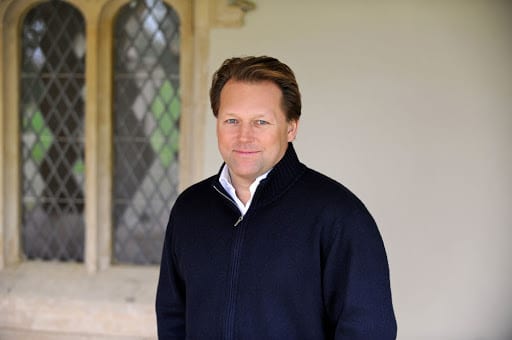
The paper’s chief music critic Anthony Tommasini has called for blind auditions to be abolished because they impede the advance of diversity in orchestras.
He writes: The status quo is not working. If things are to change, ensembles must be able to take proactive steps to address the appalling racial imbalance that remains in their ranks. Blind auditions are no longer tenable.
Blind auditions were first introduced to ensure that every player got a fair chance, regardless of race, collour, gender or creed.
So the wheel has turned full circle?
Most players believe blind auditions are the fairest way to select the best talent.
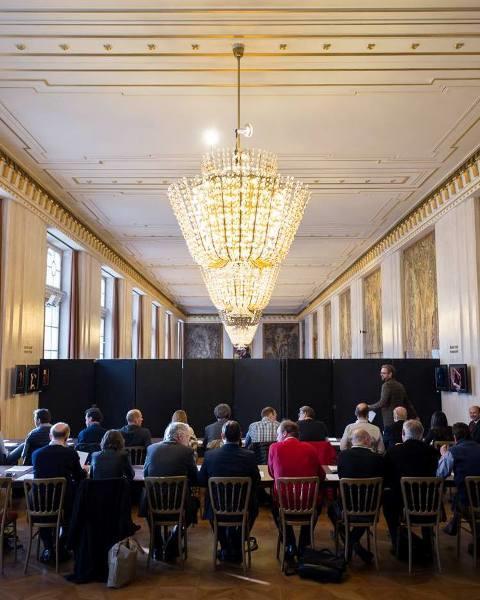
See here.
And here.
But none of the desk jockeys, apparently.
Statement: It is with great sadness that the Southbank Centre announced that up to 400 roles have been put at risk of redundancy as part of a comprehensive management action plan designed to stem the financial losses being incurred as a result of Covid-19, and to help safeguard the future of the UK’s largest arts centre.

The Teatro Comunale of Bologna today moved its operations into an acoustically customized basketball superdome, where is can acommodate an audience of about one thousand.
This may be the most important experiment for opera and concerts since Covid started.
And it has global implications. Why shouldn’t the Met take over Madison Square Garden?
Bologna’s head of culture Matteo Lepore says: ‘We brought the great acoustic chamber of the Teatro Comunale Bologna to the Palazzo dello Sport. The orchestra rehearsal has started.
‘If the results go well we plan to move the next season of the Municipal Theatre to our Madison in Piazza Azzarita. We can reach more than a thousand places safely. This is how we save culture and invent the future in #Bologna.’
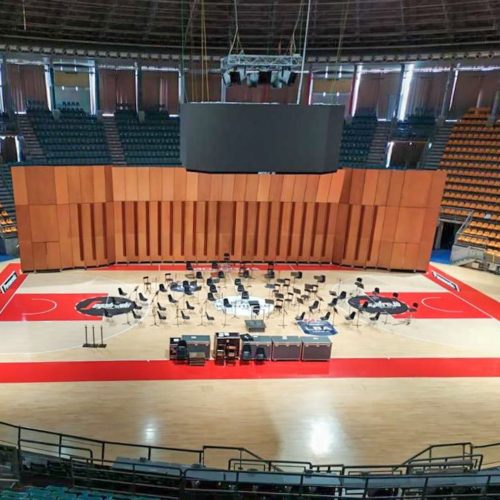
Coming up from Oneworld, who published my lastbook, is the intriguing story of the Kanneh-Masons, as never told before.
The author: Kadiatu Kanneh-Mason is a former lecturer at Birmingham University and the mother of sevennchildren. Sheku Kanneh-Mason, her third eldest was the first black musician to win BBC Young Musician of the Year in 2016 and performed at the wedding of Prince Harry and Meghan Markle. Three of his siblings are also former BBC Young Musician category finalists and the eldest, pianist Isata, has also presented for the Proms. Collectively, the Kanneh-Masons have performed at the 2018 BAFTA Ceremony and concert halls across the world, not to mention the hugely popular live performances from their family home in Nottingham during lockdown.
Kadiatu says: ‘It’s not just a book about music. It’s also a book about overcoming racial barriers. It’s a book about courage.’
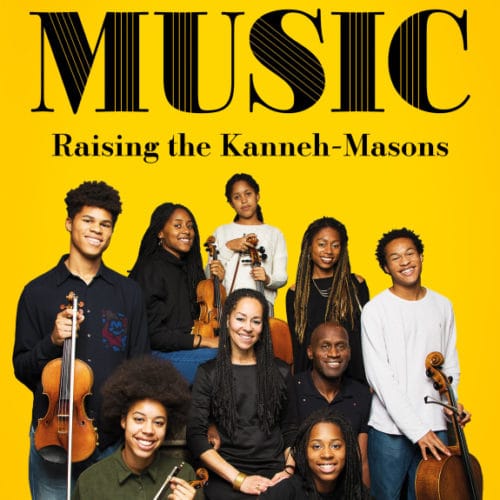
The conductor José Serebrier has offered us this memoir of Bohuslav Martinu, whose music we shared earlier this week.
Martinu accepted me as his student at Curtis when I was 17, and wrote me a number of amazing letters now held at the Martinu Institute in Prague. When the Institute asked to interview me, at first I turned it down, indicating that I never got to have a lesson from Martinu, that he left Curtis before I arrived in Philadelphia, but the Institute insisted because of what Martinu had written about me. Amazing. The story of what happened is also quite amazing. Martinu lived in NY and was also teaching at Juilliard. The train New York-Philadelphia was unreliable in the mid-50’s and took at least 4 hours, so sometimes Martinu would be late for classes at Curtis. He saw that his meager pay-checks showed discounts for lateness, petty amounts, but not acceptable. He resigned and decided to leave the US.He wrote me the most beautiful letter of apology for not remaining there to teach me, and left for Switzerland [where he died].
